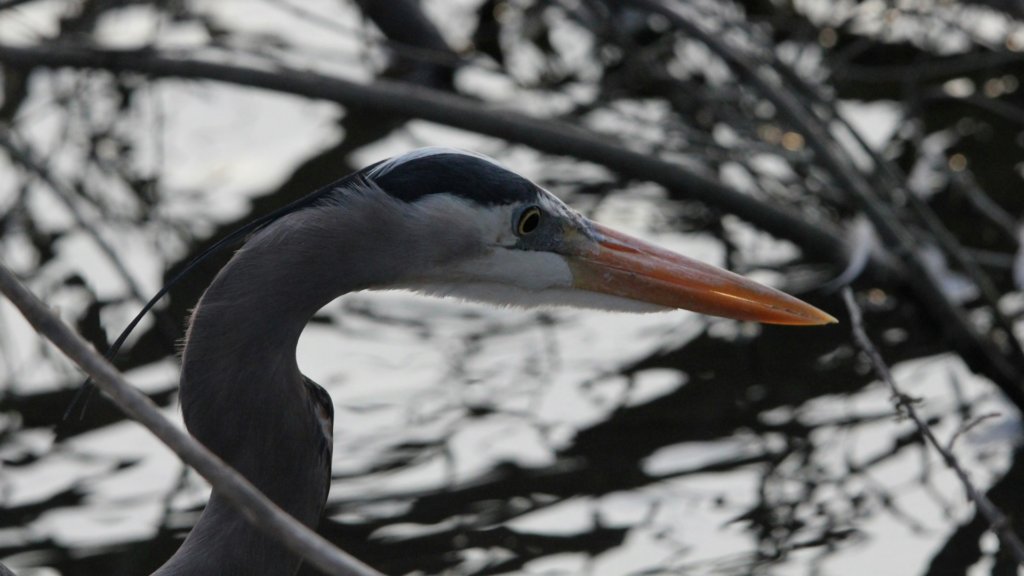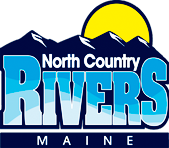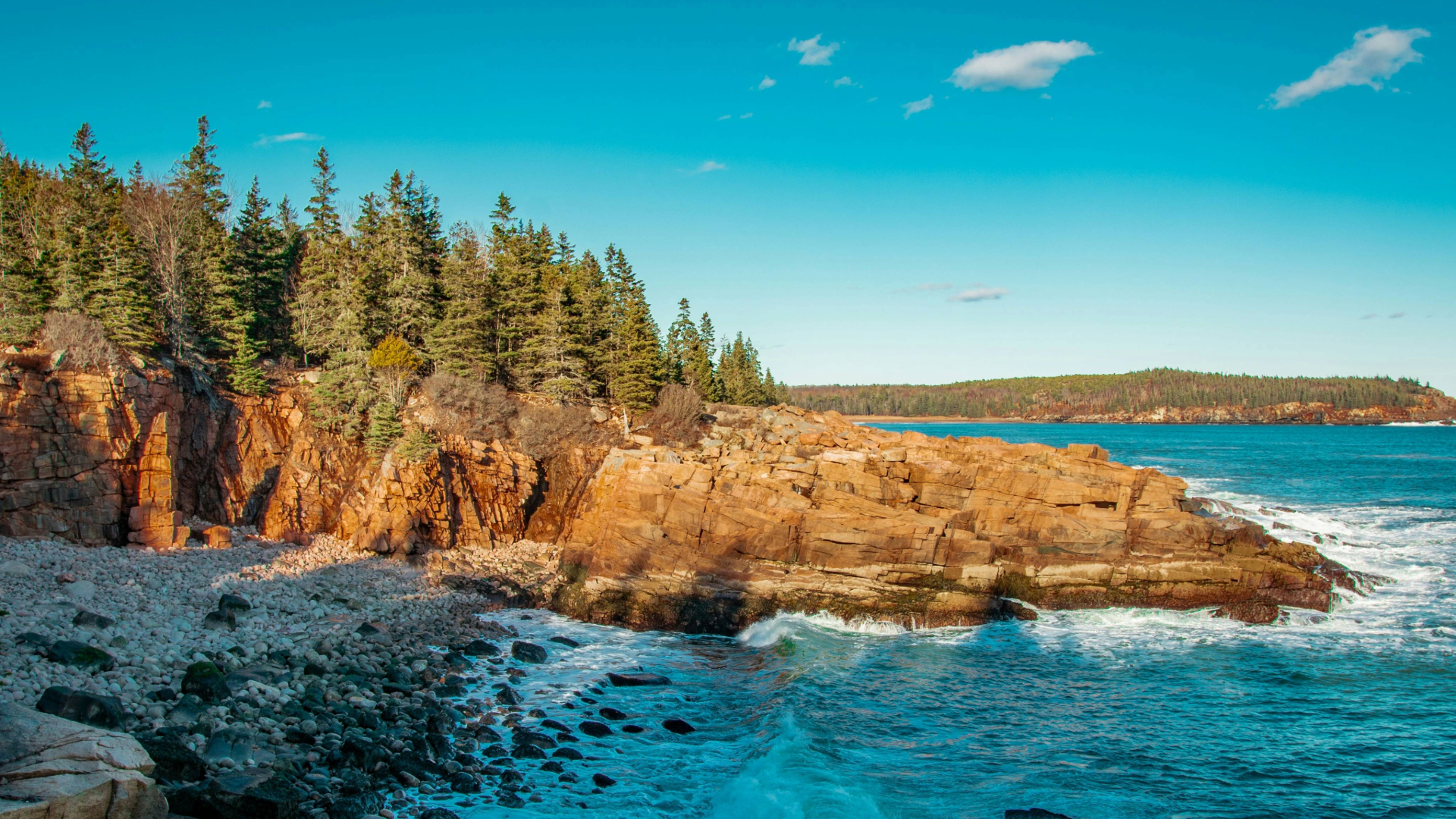North Country Rivers’ home base of Bingham, Maine, is the perfect launching pad for adventures and serene activities beyond the thrilling white water rafting for which we’re renowned.
As you dry off from the rapids, consider what else may await you in this diverse and stunning region. From the rugged trails of nearby mountains to the tranquil waters of serene lakes, Bingham and the surrounding area offer many ways to immerse yourself in the natural beauty of Maine.
Imagine starting your day with a sunrise hike along segments of the Appalachian Trail, where the early light bathes the forest in golden hues and the air is fresh with the scent of pine and earth.
For those who relish the call of the wild, the area’s abundant wildlife and birding opportunities present a delightful venture. With binoculars in hand and stealth at your side, you can observe the majestic flight of an eagle or the quiet forage of a moose.
The rivers and lakes not only challenge rafters but also draw anglers seeking the thrill of the catch, from native brook trout to impressive landlocked salmon, offering a different kind of challenge that requires patience and skill.
As the day winds down, consider a gentle paddle on Wyman Lake or a guided boat tour on the Kennebec River to experience the calm and scenic side of Bingham’s waterways. Or perhaps visit a local farm for a taste of Maine’s agrarian roots, enjoying fresh produce and engaging with the community.
Whether you’re seeking solitude in nature’s embrace or the joy of discovery in new activities, Bingham provides an unforgettable backdrop to a diverse and rewarding adventure.
Here’s a sampling of those activities for your plans!
Hiking
Bingham and its surrounding areas, like The Forks, offer numerous hiking opportunities.
For a close-by challenge, tackle sections of the Appalachian Trail or explore the trails around Moxie Falls and Pleasant Pond Mountain. Both provide stunning natural scenery and varying degrees of difficulty to accommodate different skill levels.
READ MORE: 5 Maine Hiking Trails Near North County Rivers
Two unique qualities that distinguish Maine hiking trails from the rest of the U.S. are the state’s diverse ecosystems and dramatic seasonal changes.
Maine’s trails pass through an extraordinary range of natural environments—from coastal walks along rugged cliffs to deep forest trails, remote alpine ascents, and serene lakeside paths. Depending on how far you’re willing to roam from your base in Bingham, this ecological diversity allows hikers to experience a variety of landscapes within a single hike or across different trails.
Summer offers lush greenery and full canopy cover, ideal for shaded hikes. Autumn brings a spectacular display of fall foliage with bright oranges, reds, and yellows that offer some of the most photogenic hiking experiences in North America. Winter turns the trails into a snowy wonderland, ideal for snowshoeing and witnessing the quiet beauty of snow-covered trees and frozen lakes.
Each season not only changes the landscape’s appearance but also affects the hiking experience, from the sounds underfoot to the air’s scent.

Acadia National Park
Although Acadia National Park is about a three-hour drive from Bingham, it’s well worth a day trip or an overnight stay. Plan to leave early to maximize your time in the park, exploring its iconic trails like the Precipice or Jordan Pond Path, and enjoy the sunset from Cadillac Mountain.
The park is a patchwork of biodiverse habitats, hosting a mix of oceanic, forest, and mountain environments. This diversity supports a wide variety of flora and fauna, including over 1,000 species of plants and a rich array of wildlife, from moose and black bears to numerous bird species. Acadia is also a haven for marine life, with cold Atlantic waters teeming with creatures from seals to whales.
Acadia offers a plethora of recreational opportunities suited to all ages and interests, and hiking is perhaps the most popular activity. The seemingly compact park boasts more than 120 miles of trails that range from easy coastal walks to more challenging mountain hikes, like the Precipice Trail. The park is also famous for its 45 miles of carriage roads, where visitors can bike, horseback ride, or enjoy a leisurely stroll without the interference of motor vehicles. During winter, these paths become excellent tracks for cross-country skiing and snowshoeing.
Rock Climbing
While Bingham isn’t known for its rock climbing, necessarily, nearby areas like the Camden Hills feature terrific rock faces. Camden Hills State Park is about a two-hour drive away, near Rockland, and its terrain offers both challenging and beginner-friendly climbs.
The rock faces in Camden Hills are primarily composed of coastal Maine granite, known for its solid quality and interesting features, including cracks, slabs, and overhangs.
One of the most notable areas within Camden Hills for rock climbing is the Barrett’s Cove Cliff. This site offers a range of routes that vary in difficulty, providing options for climbers of all skill levels. The climbs here mostly face southeast, allowing for pleasant conditions with plenty of sunlight, especially in the mornings and early afternoons. The views from Barrett’s Cove Cliff are particularly stunning, overlooking Megunticook Lake and providing expansive vistas of the surrounding landscape.
Fishing
North Country River sits along the shore of the Kennebec River–and very close to the Penobscot and Dead rivers–making it a prime fishing spot. Local guides can be hired for a day of fishing for native brook trout or landlocked salmon.
Nearby Wyman Lake also offers good conditions for fishing, especially ice fishing in the winter.
Seasonality definitely comes into play here.
In the spring, the melting snow raises water levels and temperatures, making it an excellent time for trout and landlocked salmon, which become more active and feed aggressively. As summer arrives, the focus shifts to smallmouth and striped bass, particularly effective during early mornings and late evenings when the fish are most active due to cooler temperatures.
Fall on the Kennebec is a favored season among anglers due to the stunning foliage and vigorous fish activity as they prepare for winter. This period is especially good for brown and brook trout, with a possible fall run of striped bass if conditions are right. Winter fishing is quieter but can be rewarding for dedicated trout anglers in areas where the river remains unfrozen, requiring cold-weather gear and safety precautions. Regardless of the season, it’s essential to check local fishing regulations and conditions before heading out to ensure a successful and responsible fishing experience.
Biking
The area around Bingham provides scenic routes for mountain biking and road cycling. The terrain around Bingham can vary from paved roads to gravel paths and trails. A hybrid or mountain bike is best suited for handling a variety of surfaces you might encounter.
Explore local trails or take a more leisurely ride along the country roads. For a unique experience, if you spend time in Acadia National Park, bike parts of the carriage roads in the summer.
Wildlife Watching
The forests and rivers around Bingham are ideal for spotting moose, deer, and other wildlife. Early morning or late evening are the best times for wildlife watching, especially in the less traveled areas around the local state parks and public reserved lands.
The rivers are home to playful river otters and industrious beavers, whose dams are a common sight. Additionally, red foxes with their distinctive red fur and bushy tails can occasionally be spotted along the woodland edges.
These regions also support smaller, yet equally fascinating wildlife such as raccoons, often found near campsites, and porcupines noticeable by their nocturnal activities and the telltale signs of chewed bark they leave behind. While more rare, the secretive bobcats inhabit the deeper forests, and the ubiquitous squirrels and chipmunks add a lively presence to the landscape. This diverse wildlife presence makes the Bingham and Kennebec River area a compelling destination for nature lovers and wildlife enthusiasts.

Birding
Birding enthusiasts can explore the vast forests and water bodies. The Kennebec and Dead Rivers are particularly good for spotting bald eagles, ospreys, and waterfowl. Spring and fall migrations can be especially rewarding.
The Bingham area and the Kennebec River in Maine provide a rich habitat for a variety of bird species, making it an excellent destination for birdwatchers. Along the river, you’re likely to spot Bald Eagles and Ospreys, especially during the winter months when they perch along the riverbanks or soar overhead. Great Blue Herons are also a common sight, gracefully fishing in the shallows during the warmer months. In the colder seasons, groups of Common Mergansers dive for fish in the river, and the striking sound of Belted Kingfishers can often be heard as they patrol the water’s edge.
The surrounding forests and fields are alive with the songs and activities of various birds. During migration, the area becomes a corridor for numerous warblers, such as the American redstart, the common yellowthroat, and the yellow warbler. The woods are also home to several species of woodpeckers, including the large pileated woodpecker and the smaller downy woodpecker. Open fields and roadways often host vibrant American Goldfinches, particularly where thistle and other seeds are abundant.
Additionally, during the breeding season, the melodious songs of Bobolinks are a treat in the local meadows. Although less common, Peregrine Falcons have been observed along the river’s cliffs, where they nest. This variety of birds makes the Bingham and Kennebec River area a diverse and fascinating place for birdwatching, offering sightings of both common and rare species in their natural habitats.
Visiting Local Farms and Orchards
The rural areas around Bingham support various farms that may offer tours, pick-your-own fruits, and other farm-to-table activities. Seasonal visits to apple orchards or pumpkin farms in the fall can be particularly fun and educational for families.
Many farms in and around Bingham open their doors to visitors for guided tours, where you can learn about local farming practices, the history of the farm, and the challenges and rewards of farming in Maine. These tours often include demonstrations of farming equipment, insights into animal husbandry, and discussions about sustainable farming techniques. This can be a particularly educational experience for children, giving them a first-hand look at where their food comes from and how it is produced.
Pick-your-own farms are a hit with families and provide a fun way to enjoy the outdoors while harvesting your own fresh fruits. Depending on the season, you might pick strawberries, blueberries, raspberries, or apples. These activities not only offer the freshest produce right from the source but also a satisfying, hands-on experience that blends recreation with learning. Many farms offer baskets and guidance on how to pick the fruits, making this an accessible activity for all ages.
Snowmobiling
During the winter months, the landscape around Bingham transforms into a perfect setting for snowmobiling. Extensive trails are maintained by local snowmobile clubs, offering both short rides and access to longer trail systems that traverse much of the state.
The North Country Rivers base resort complex is celebrated for offering some of the best snowmobiling in New England. This area is not only known for its substantial annual snowfall, which averages over 10 feet, but also for its stunningly beautiful and pristine wilderness, recognized as some of the finest in the United States.
Strategically situated directly on Maine’s Interconnecting Trail System (ITS), our resort provides immediate access to approximately 13,000 miles of meticulously groomed trails that extend all the way to Canada. Specifically, North Country Rivers is located on the ITS 87 section, placing us in a prime position to explore diverse directions. To the north, the trail leads to The Forks and Jackman, stretching into Canada; to the west, it reaches the Rangeley Lakes region; and to the northeast, it opens paths to the Moosehead Lake region and even Baxter State Park. The ITS, along with its numerous feeder trails, offers hundreds of miles of expansive terrain, breathtaking scenery, and boundless adventure opportunities, accommodating snowmobilers of all skill levels.

